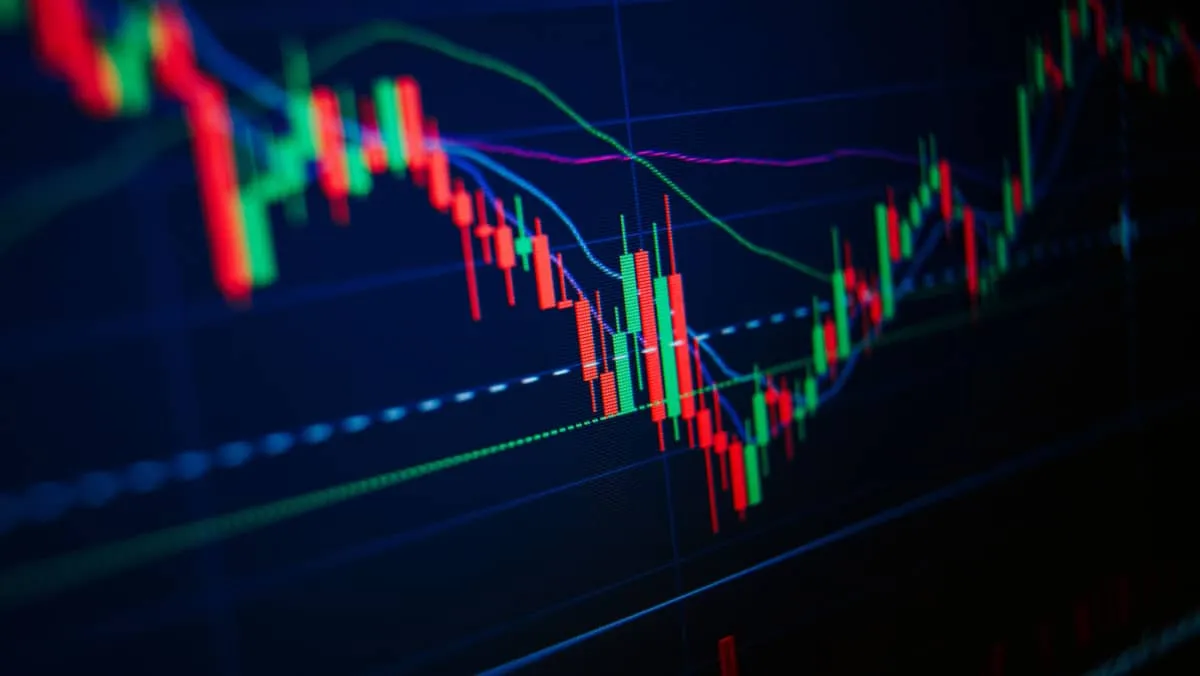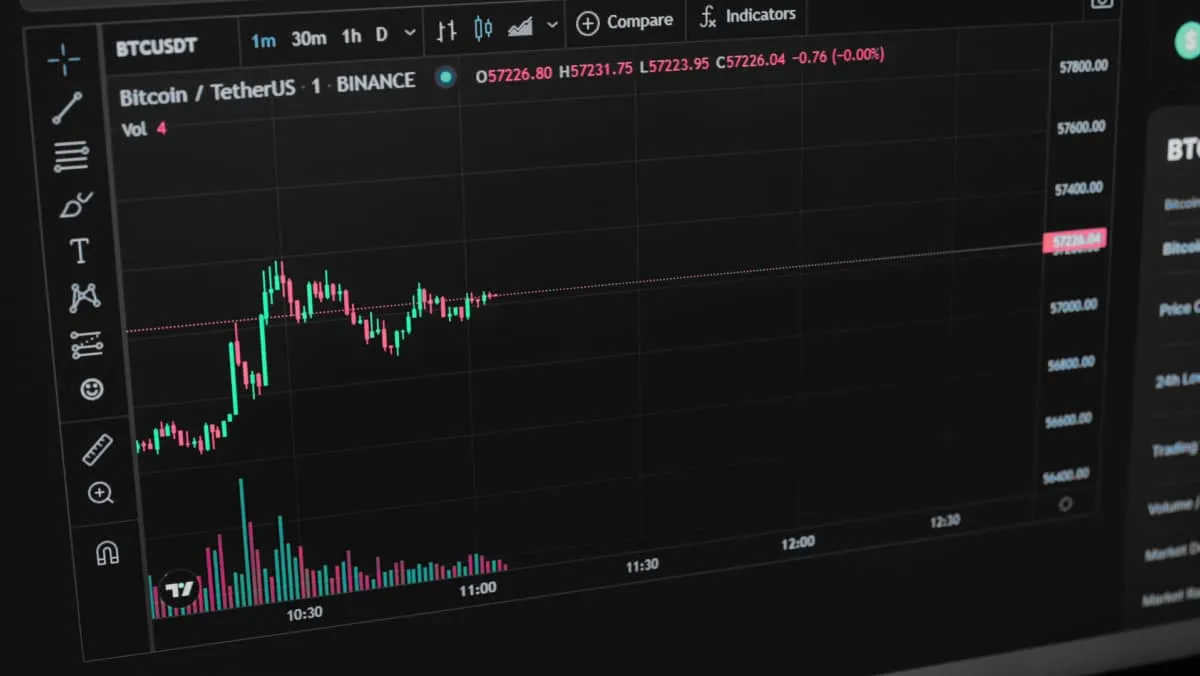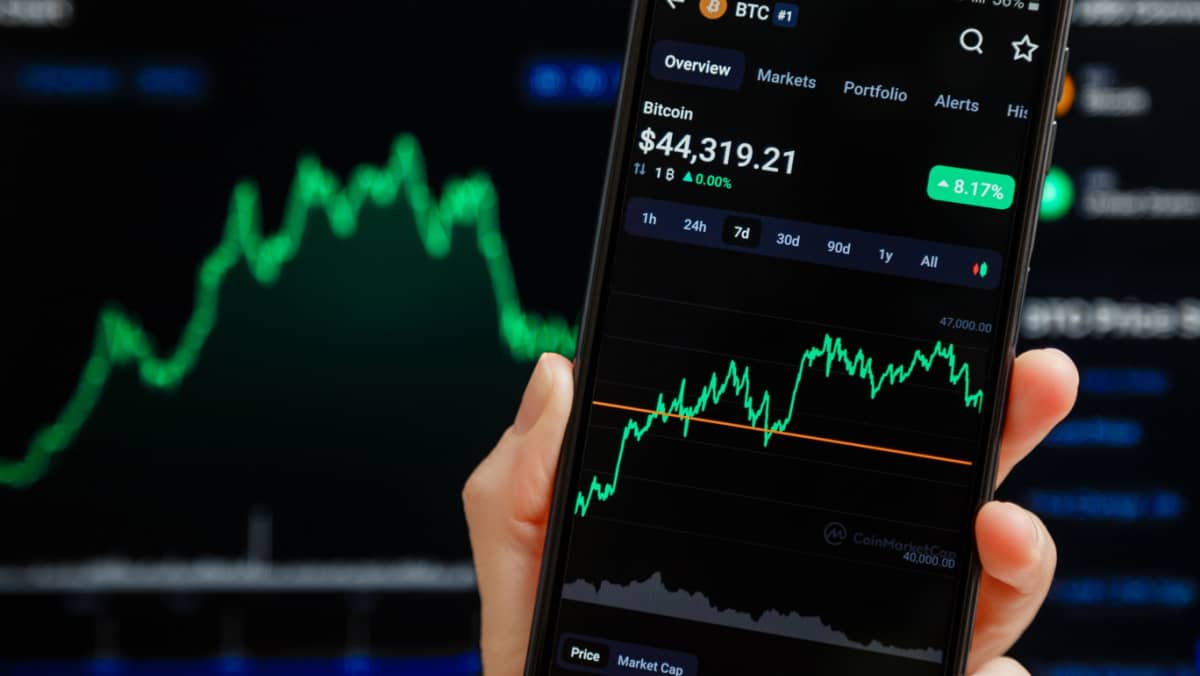Tuesday Dec 19 2023 06:59

9 min

The average true range (ATR) is a technical analysis indicator that measures market volatility. This indicator tells traders how volatile a market is and helps confirm when markets are calm or intensifying with activity.
In this comprehensive guide, you’ll learn about the average true range indicator—how it works, what it tells you, and how to use it in trading.
The average true range indicator, or ATR, is a technical analysis tool that measures the distance between the current high and low during a given period. The true range incorporates gaps in price movements and calculates the total price range over that period. The ATR then takes an exponential moving average (EMA) of the true ranges, smoothing volatility to highlight sustained changes.
Traders use the ATR to confirm when markets swing into higher or lower volatility regimes. This helps assess when risk levels may be increasing. The ATR also aids in planning trade size and stopping losses relative to a market’s volatility conditions.
The ATR serves traders in a few crucial ways:

The mechanics behind the average true range are relatively straightforward. The ATR requires a period setting (typically 14 bars) and calculates the true range over that lookback window. After X periods, it takes an exponential moving average of those true ranges.
Here is the process in detail:
The true range is calculated by considering the asset’s highest high and lowest low price during the analyzed period. The true range can be used for daily and weekly bars but can also be applied to any timeframe. This makes it a versatile tool for traders and investors who want to gain a more comprehensive understanding of a security’s price behaviour.
The high minus the low does not account for gaps between bars, so the true range factors those in. The greatest distance of the following inputs defines the true range:
Of those, the most significant number is used as the true range. Accounting for gaps creates accurate volatility measurements.
Finally, an exponential moving average (EMA) of the true ranges over X periods is taken. The most popular setting is a 14-period EMA, which serves well for gauging short-term volatility trends. The EMA component also smooths the average true range values for straightforward interpretation.
This article may pique your interest: What is a commodity profit calculator and how does it work?
The primary usage of the average true range indicator is confirming periods of expanding or contracting volatility. It also provides a method for setting stop losses and determining position size proportional to market risk conditions. Here are the main applications of the ATR:
Higher average true range readings signal wider potential price swings and increased risk. So, as volatility expands based on ATR signals, increase stop-loss levels from the current price to account for the added uncertainty. During lower volatility regimes signalled by a declining ATR, stops can be tightened near swing levels to lock in open profits.

As mentioned, sustained average true range rises indicate mounting volatility often tied to directional market moves. Watch for the ATR to climb sharply over a few weeks as a heads-up for larger breakouts and breakdowns across stocks, commodities, and currencies. The opposite also rings true—falling ATR levels suggest lower volatility ahead.
Similar to stop placement, traders also alter position size based on the average true range. When volatility surges markedly—shown by a sharp ATR increase—a smaller position size helps control risk on new trades. With the ATR dropping and volatility expectations lowered, capital put at risk on new positions can be increased accordingly.
The average true range also filters for the legitimacy of entry and exit signals. Strong signals that materialize against a backdrop of expanding volatility—revealed by ATR readings—have a higher probability than signals arising as volatility contracts. Traders can screen setups based on average true range direction to sort high-quality signals from the rest.
The average true range (ATR) is a versatile volatility indicator with several applications for traders. By tracking the true high-low range over time, the ATR gauges market volatility and warns when volatility is expanding or contracting.
Traders can use ATR trends to confirm the legitimacy of entry and exit signals, set appropriate stop losses based on risk tolerance, and size positions proportionately to volatility conditions. As the average true range climbs sharply, volatility rises, and larger price swings are ahead, signalling the need for caution and prudent risk management.
Learning more about utilizing the ATR indicator is highly recommended for traders interested in assessing volatility trends and reacting to changing risk dynamics. It delivers vital insights into market volatility across any timeframe.
If you want to learn more and practice using a highly-regarded CFD trading platform, consider markets.com. We offer a demo account allowing you to explore our platform, practice implementing your strategy with the average true range indicator, and use virtual money without risking your real funds.
Become a member of markets.com and access a cutting-edge trading platform!
“When considering “CFDs” for trading and price predictions, remember that trading CFDs involves a significant risk and could result in capital loss. Past performance is not indicative of any future results. This information is provided for informative purposes only and should not be considered investment advice.